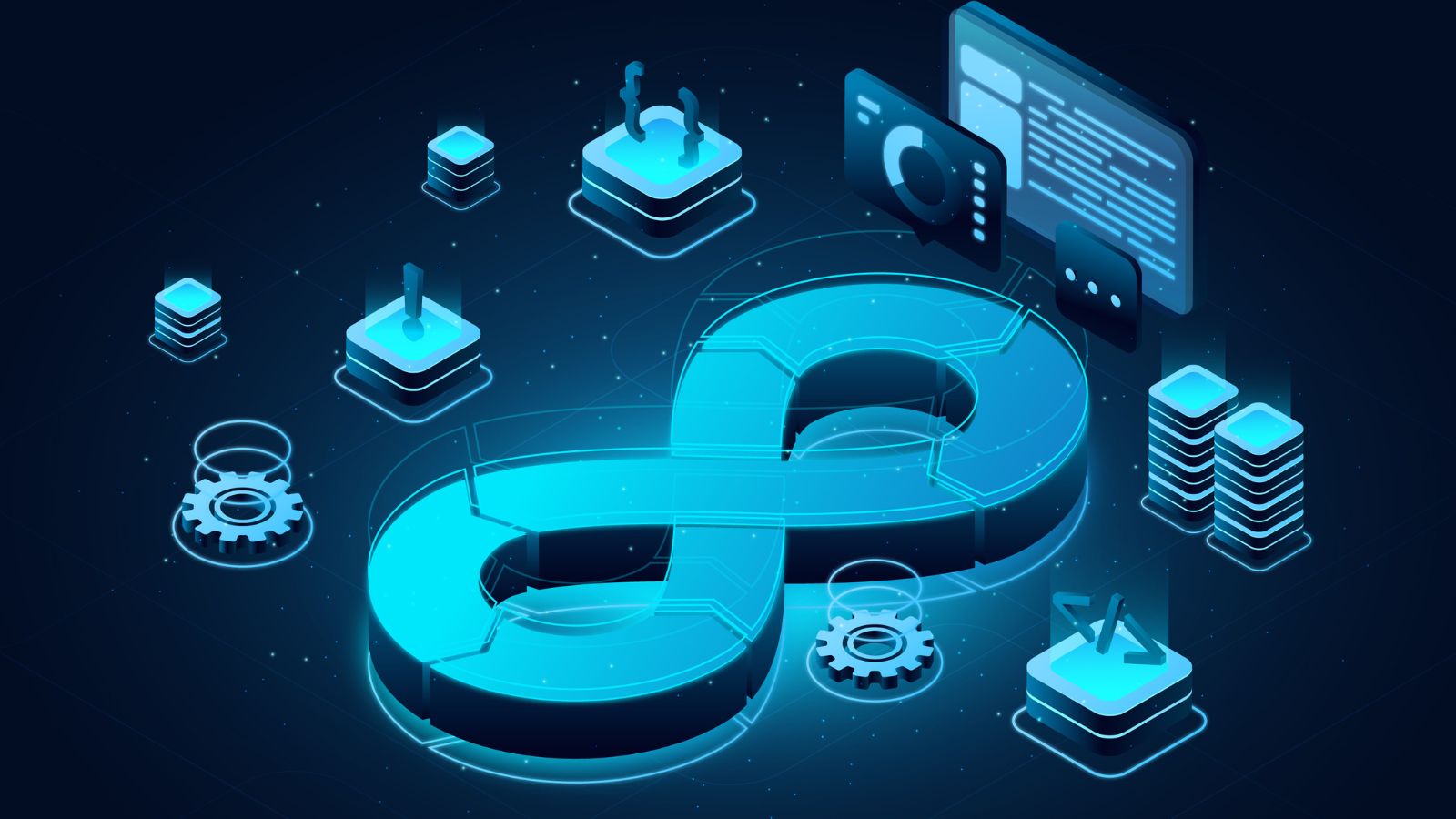Ways To Reduce Business Complexity with Enterprise Architecture
Technology is a solid force in the current economic environment. The need for appropriate technology is growing as we transition towards a more linked and complicated world; in fact, the average organization now spends money on 1,516 apps. Since more people are working remotely, there is an urgent need to go to the cloud. It is now estimated that application expenditures account for 80% of the total IT budget.
The scale and extent of the typical business IT stack of today far exceeds any manual management techniques. Organizations must learn how to use cutting-edge technologies, high degrees of automation, and a data-driven strategy to decrease software complexity.
All the aforementioned may be accomplished with the help of a well-implemented enterprise architecture strategy, and the success of such a plan depends on the use of an EAM platform.
The proper EAM platform enables crucial functions for streamlining your software stack, preserving high-quality data, lowering risk, and democratizing the benefit of enterprise architecture throughout the company.
In the sections that follow, we'll go through six practical ways you may use EAM technologies to simplify your organization's software and link enterprise architecture to practical, significant business outcomes.
The Cost of Complex Software Stacks
We are aware that software stacks are more extensive and complicated than ever, but why precisely is this a problem?
Simply put, software complexity drives up costs, lowers productivity, and hinders your capacity to provide top-notch end-user experiences. You boost the overall cost of IT ownership without reaping any rewards when you neglect to optimize your software stack, keeping it out-of-date, redundant, or otherwise unnecessary systems in place.
Compounding technical debt, defined as "missed opportunities and additional expenses owing to technological inefficiencies caused by earlier mistakes", is one effect of this carelessness that ultimately slows down your entire business. This slowdown is referred to as a "complexity tax."
Every business will undoubtedly have some technical debt, but if not managed well, your capacity to provide value will slowly deteriorate. Additionally, the harder it is to solve the problem, the longer it continues.
This is the awful scenario that many businesses are now in. The epidemic caused a sharp rise in technology spending over a short period of time, which is a proven way to build up technological debt. Companies must now step up their efforts to handle the issue. Unfortunately, given the size of the issue, manual approaches to solving it are ineffective.
Companies require a technology-driven approach that automates and centralizes their activities if they are to achieve significant progress and see tangible results. When it comes to managing software complexity, an enterprise architecture management platform created by the best digital transformation solutions company like TransformHub is a potent tool that is specially suited for the job.
The Dangers of IT Complexity
There are several causes of the IT complexity problem. There are several contributing aspects to the issue. For instance, ill-conceived innovation, obsolete technology left over from a merger and acquisition (M&A), rising cloud use, and an abrupt transition to remote work, all provide unique issues.
Additionally, each of these elements poses risks to the company that may influence every aspect of operations, from staff productivity to business continuity and catastrophe recovery.
The following are a few of the most frequent risks linked to IT complexity:
- Reduced productivity
Companies frequently neglect to replace outdated systems as they innovate and add technologies. As a result, many systems are left doing similarly minded tasks with differing degrees of effectiveness. Whether they are redundant or not, all the systems require maintenance, which takes time away from innovation and higher-value work.
- Increased risks to cybersecurity
It is challenging to safeguard complex systems. Your network's security risks and holes grow as you add more suppliers, outside service providers, and distant endpoints. Cybercriminals have increased the number of threats they make against enterprise-level enterprises as companies' attack surfaces have grown.
- Inefficient backup and recovery
It becomes more difficult to backup data effectively as IT infrastructures get more complicated. It might be challenging to develop a single backup and recovery plan that takes care of everything when firm data is dispersed across several platforms and IT is managing a number of infrastructures.
Pulling data from several backup sources—some current, some perhaps not so much—is more of a chance than you should be ready to accept when speedy recovery and restoration are essential to business continuity.
- Downtime halting business operations
Regardless of the size of the organization, downtime is terrible, but at the enterprise level, it can be disastrous. Your reputation and financial results will suffer more harm the longer vital systems remain down.
Downtime may quickly go from a hassle to a nightmare of data loss and recovery if there isn't a thorough business continuity plan in place.
- Regulatory and compliance issues
You do not want to end yourself on the wrong side of a compliance audit in highly regulated businesses. With each additional layer of IT complexity, there is an increased possibility for errors and oversights that might result in costly penalties and perhaps legal problems.
If the third-party service providers you use to host and administer your systems and apps don't take compliance as seriously as your business does, you might be held liable.
The Importance of Enterprise Architecture Tools
Microsoft Excel and PowerPoint are the two fundamental tools utilized for developing the architectural layout of a corporation. However, in complicated environments, these technologies frequently fall short of enterprise architectural practice goals. You can get help from other, more powerful third-party tools and technologies when creating sophisticated Enterprise Architecture strategies.
Enterprise architecture software that offers a single repository aid in facilitating communication and alignment throughout the business, and enterprise layers speed up repetitive operations that consume the architect's time and enable data-driven insights to make choices swiftly and decisively.
Architects may create all the models and diagrams required for their job using the modeling capabilities offered by EA tools. Workflows, alerts, and notifications are a few examples of collaboration tools that may be used to disseminate these findings inside the company. Indeed, more participation in the EA process is required since everyone must work together to maintain an EA repository.
Architects may concentrate on the most beneficial tasks, such data analysis and design definition, by using EA technologies that automate and expedite value production. Therefore, owing to capabilities like automatic discovery, less valuable tasks like data collecting, which can be time-consuming and unpleasant, can be automated.
By offering intelligent algorithms that automatically evaluate the content of the EA repository and deliver data-driven insights, such as suggestions for application rationalization or conflict identification for technology obsolescence management, TransformHub EA solutions help speed up decision-making.
Building a profession for enterprise architecture may be difficult and time-consuming. The scope of business architecture is broad, and many enterprise architects attempt to cover too much ground too quickly. They struggle to convince their management of their importance, and as a result, their budget cannot be renewed.
The suggested method for establishing an enterprise architecture practice that quickly delivers value to its stakeholders while developing a solid baseline to support company changes is to take a pragmatic approach based on use-cases and focusing on tangible outcomes.
How To Reduce Software Complexity With EAM
- Map the architecture in your present condition
The idea behind understanding your present state architecture is that you can't get somewhere without first knowing where you are. Your present state architecture, by definition, maps all pertinent dependencies, linkages, and capabilities for each element of your IT system.
Visual representations of current state structures are typical. Consider this visualization to be a single, comprehensive image of every technology-related procedure and instrument that your business uses.
Because it makes it clear what you're dealing with, creating a meaningful representation of your existing state architecture is a crucial first step in minimizing software complexity. It consolidates everything so you can see the entire breadth of the situation you're in.
- Rationalize your applications
After mapping the present condition, you could discover a few things. First, you may use several apps to serve a single business function. Additionally, you can find that some of your programs don't support a certain functionality. Rationalizing your apps entails eliminating duplication and retiring those that are no longer useful.
To solve this issue, you should make use of the Application Portfolio Management (APM) feature of your EAM platform. You will be in a better position to decide whether apps should be upgraded, decommissioned, or combined. You may use it to visualize how these choices will affect linked systems and applications.
- Assess and consolidate vendors
An overview of your vendor connections, including the number of suppliers you deal with, the number of licensing agreements you have, the cost information, and more, is one of the insights you may get from your present state architecture and APM initiatives.
Reducing the number of vendors you engage with can lower your TCO by about 25% and ease integration and system compatibility challenges. Having a complete understanding of all the services a certain vendor offers may also help you renegotiate and appropriately scale your contracts with them.
- Monitor obsolescence risk
Enterprises lose millions of dollars due to outdated software systems, which also reduce productivity and increase the risk of data loss, outages, and security breaches.
Nevertheless, keeping track of obsolescence is one of those things that gets lost in a sea of complicated applications. Monitoring the application landscape is the solution to this problem.
You may detect hazards associated with end-of-life technologies with the use of an Application Landscape Report, which provides an overview of outdated technologies. It also provides you with a color-coded map that can help you make better software choices.
- Reduce complexity and uphold compliance
Software stacks become much more complicated than they already are due to compliance requirements. Even for businesses not engaged in highly regulated industries, compliance has risen to the top of the priority list as a result of the introduction of big data and data privacy legislation. Monitoring and ensuring compliance require work, but it's worthwhile since, according to experts, the cost of non-compliance is 2.5 times more than the cost of maintenance.
Being one of the best digital transformation companies in Singapore, TransformHub offers users a survey tool that enables them to quickly gather compliance data and guarantee company-wide compliance with compliance requirements. These questionnaires may be used to make sure that all workers and stakeholders keep their knowledge current and follow the correct procedures for handling sensitive data.
- Invent useful resources
In the end, the active involvement of stakeholders from throughout the business will determine your ability to minimize software complexity. Application developers, business executives, and other users must exchange information and accept the adjustments that come with every effort to improve your application landscape.
Data visualization solutions provided by the top digital transformation companies in Singapore may significantly increase non-technical stakeholders' comprehension and buy-in. Some visualizations, such as maps of the application landscape and representations of current state architecture, have already been mentioned. Others, such enterprise roadmaps and business capability maps, can be useful for pointing out potential for improvement and assisting individuals in understanding the ROI of initiatives to simplify software.
- Keep up results for a long time
Reducing software complexity is a continual activity that calls for cooperation and effort from every department in the company. With user-friendly interfaces and a single source of truth that informs all stakeholders of the advantages these efforts offer; EAM systems make it simpler to lead these programs.
Enterprise architects are frequently in charge of linking these tools to set up automations and share data as firms adopt digital technology across all departments.
TransformHub's EA solutions assist you in streamlining and automating your business, marketing, information, and IT operations so that you may reach your business objectives in a quick and effective manner. You may go through our clients and respective case studies where we’ve mentioned a few success stories achieved through automated key operations and increased staff productivity. To learn more about our services, you may get in touch with us.
Share this
You May Also Like
These Related Stories

DevSecOps - Understanding the Dynamics of WHAT, WHY, and HOW

How To Automate a Cloud Compliance Platform




